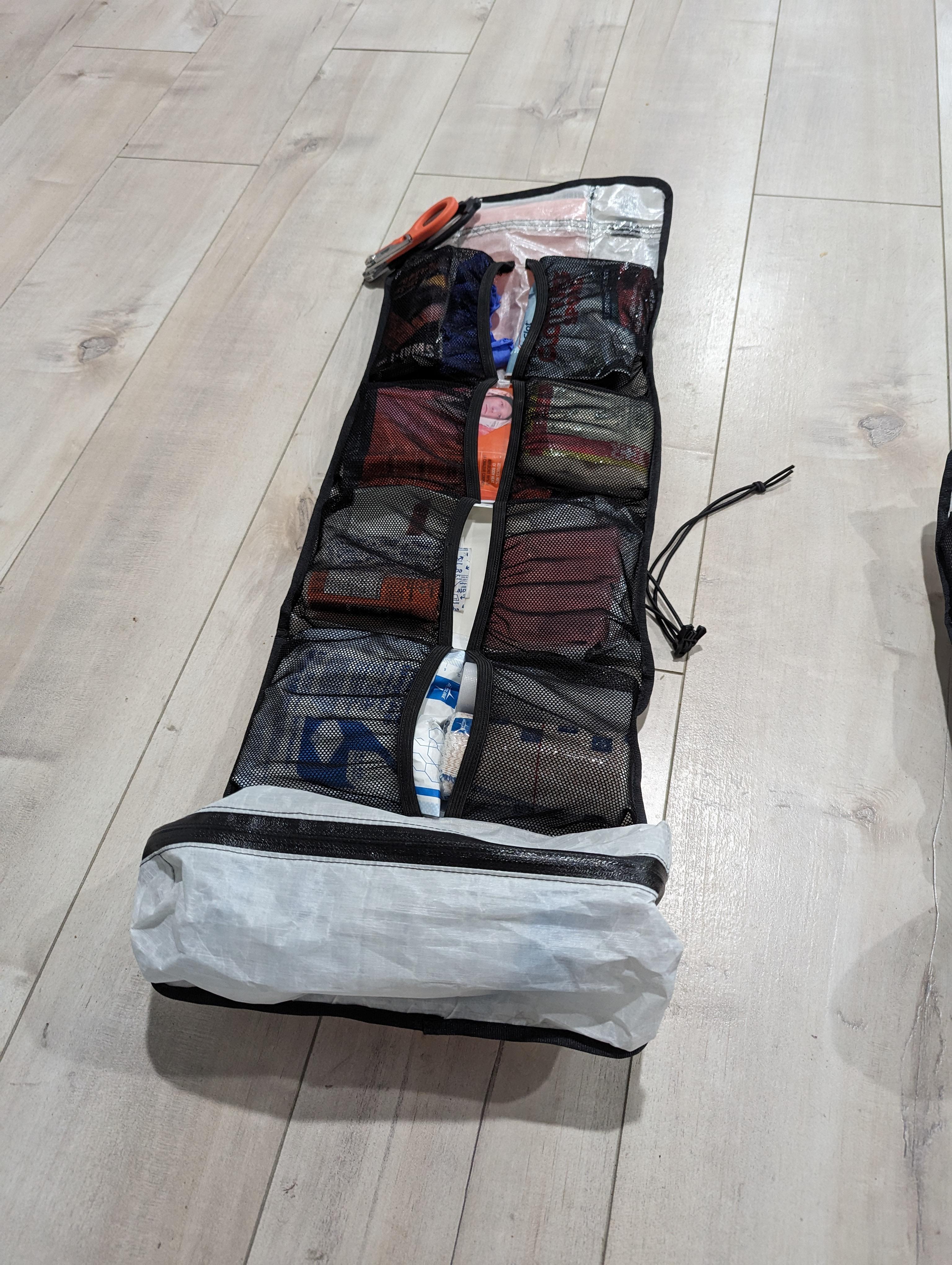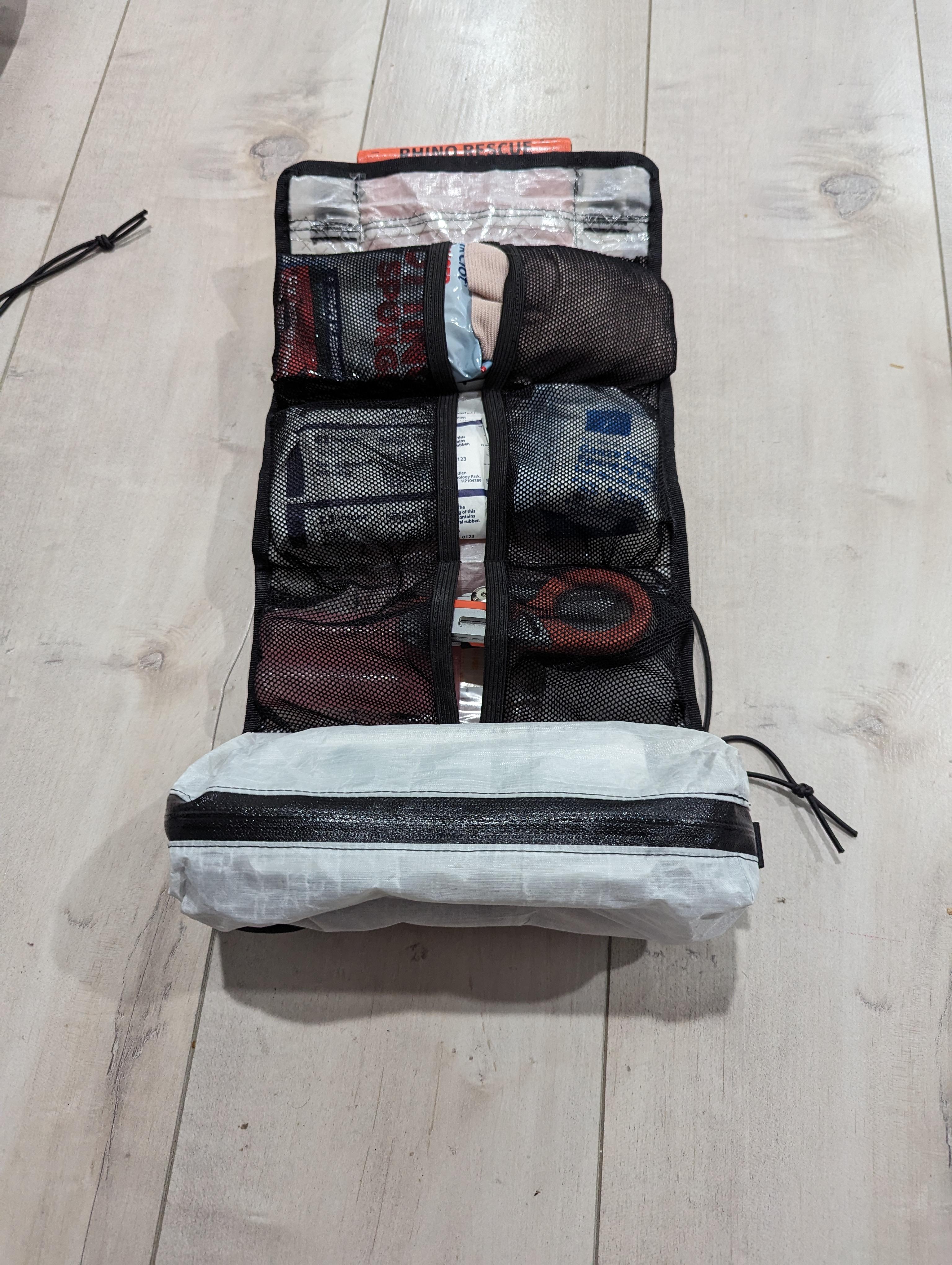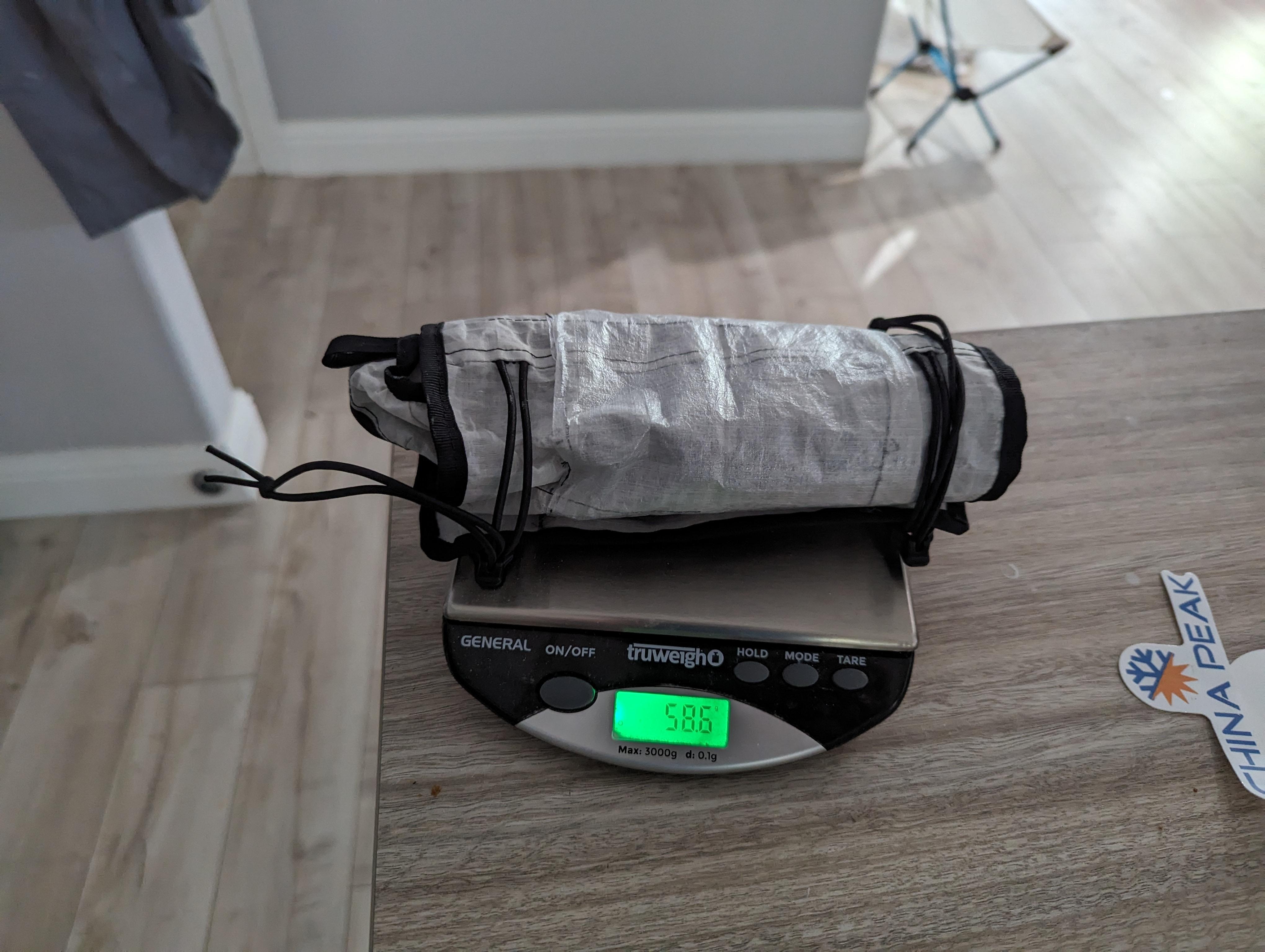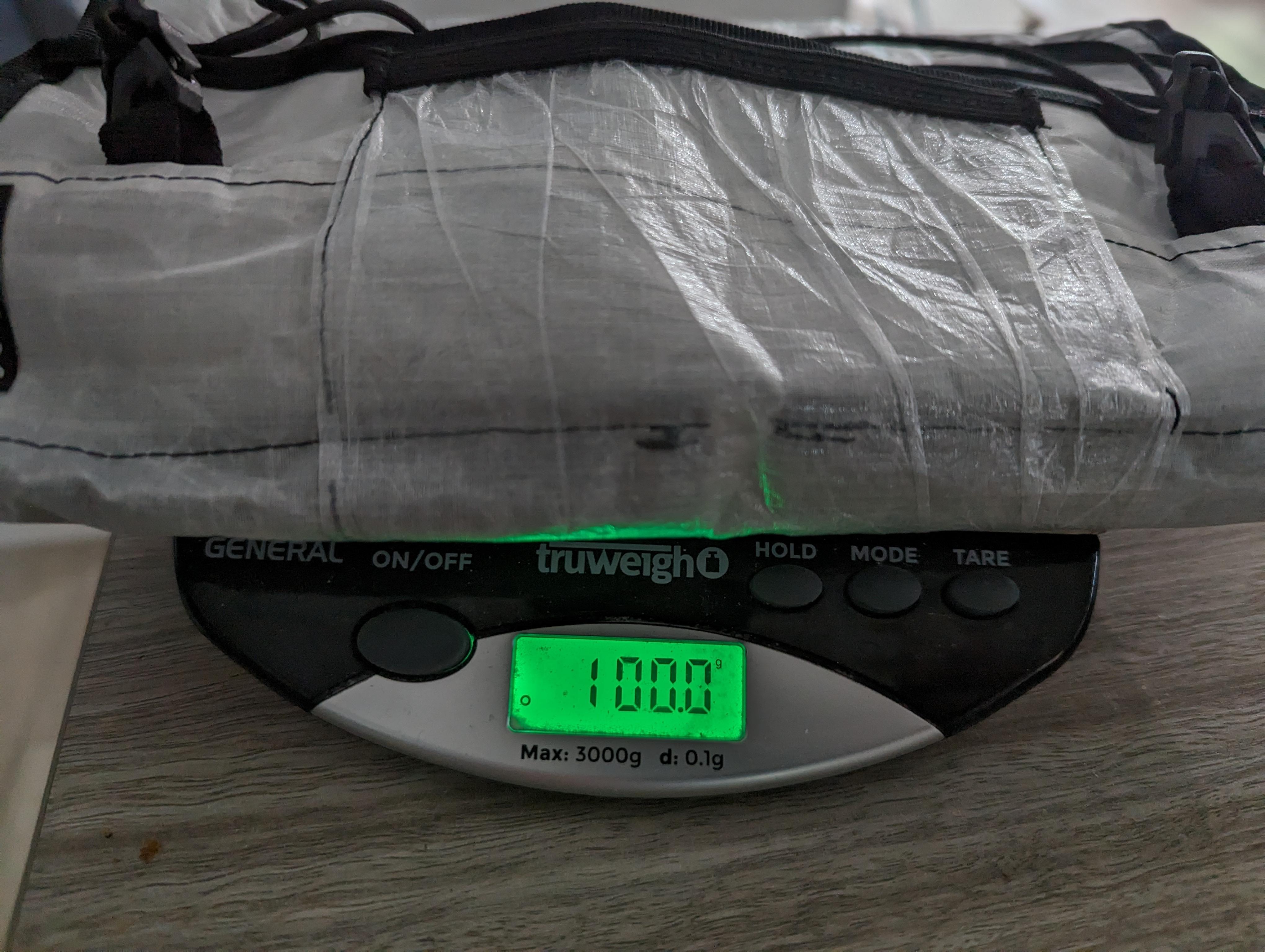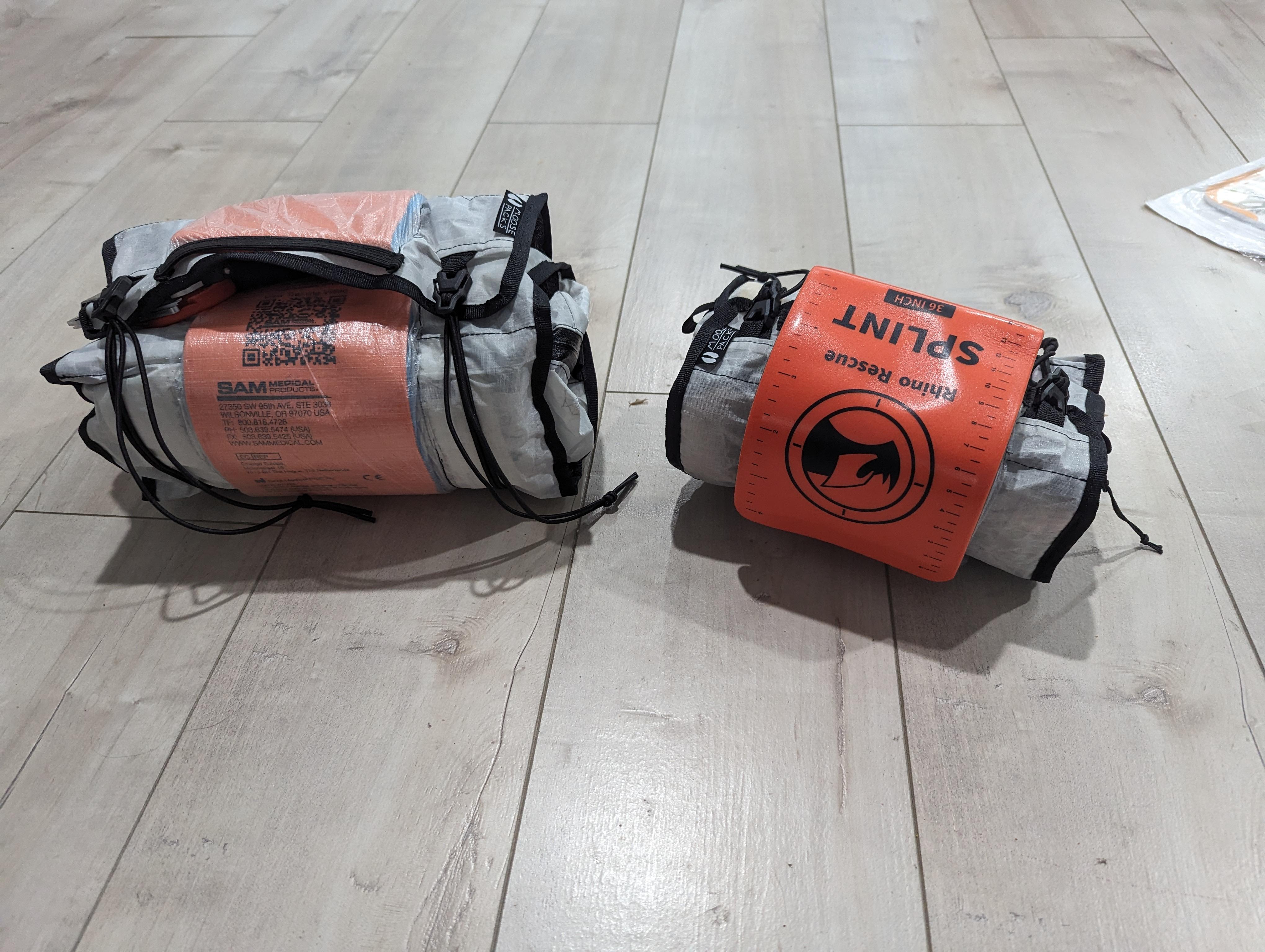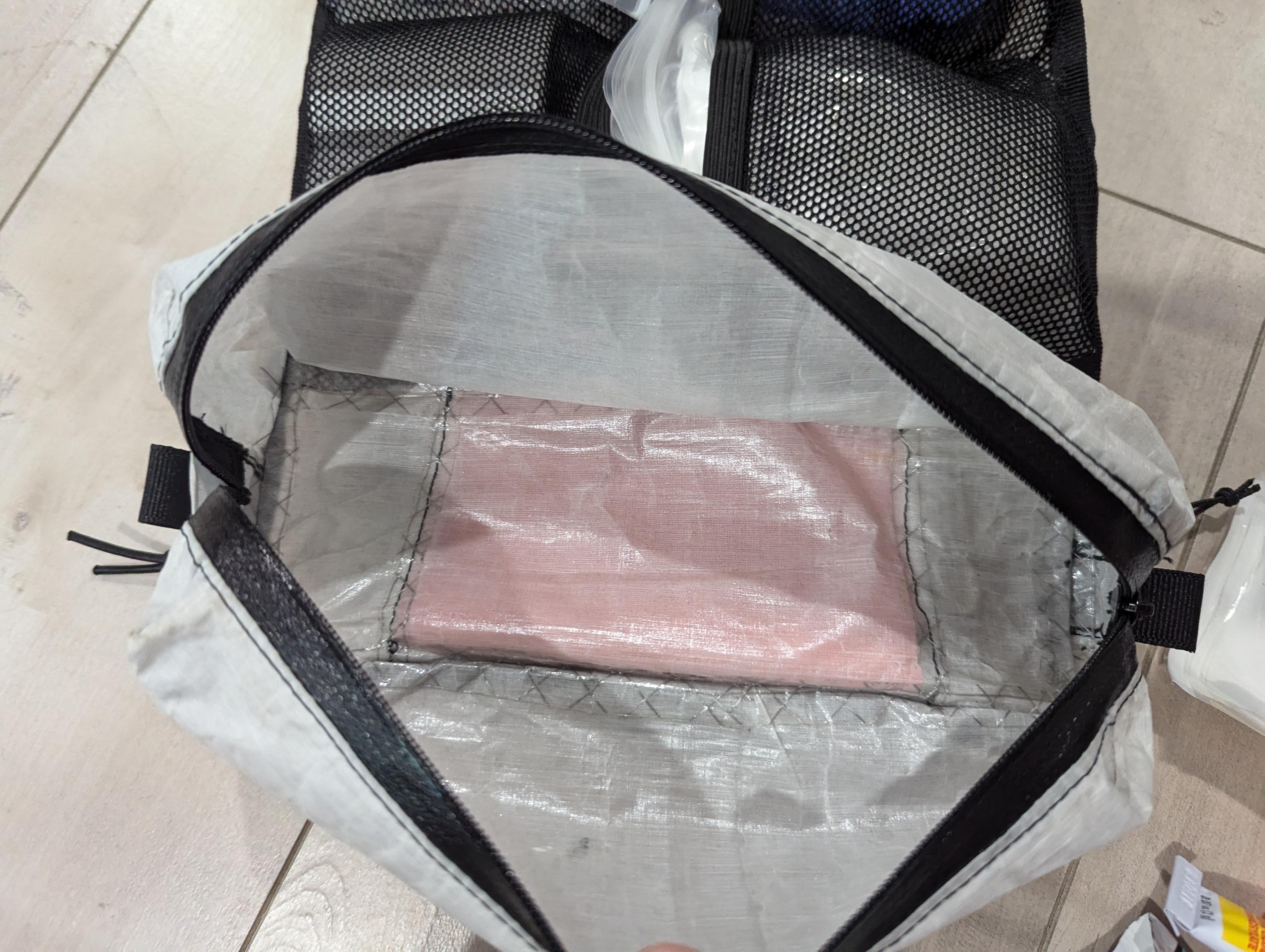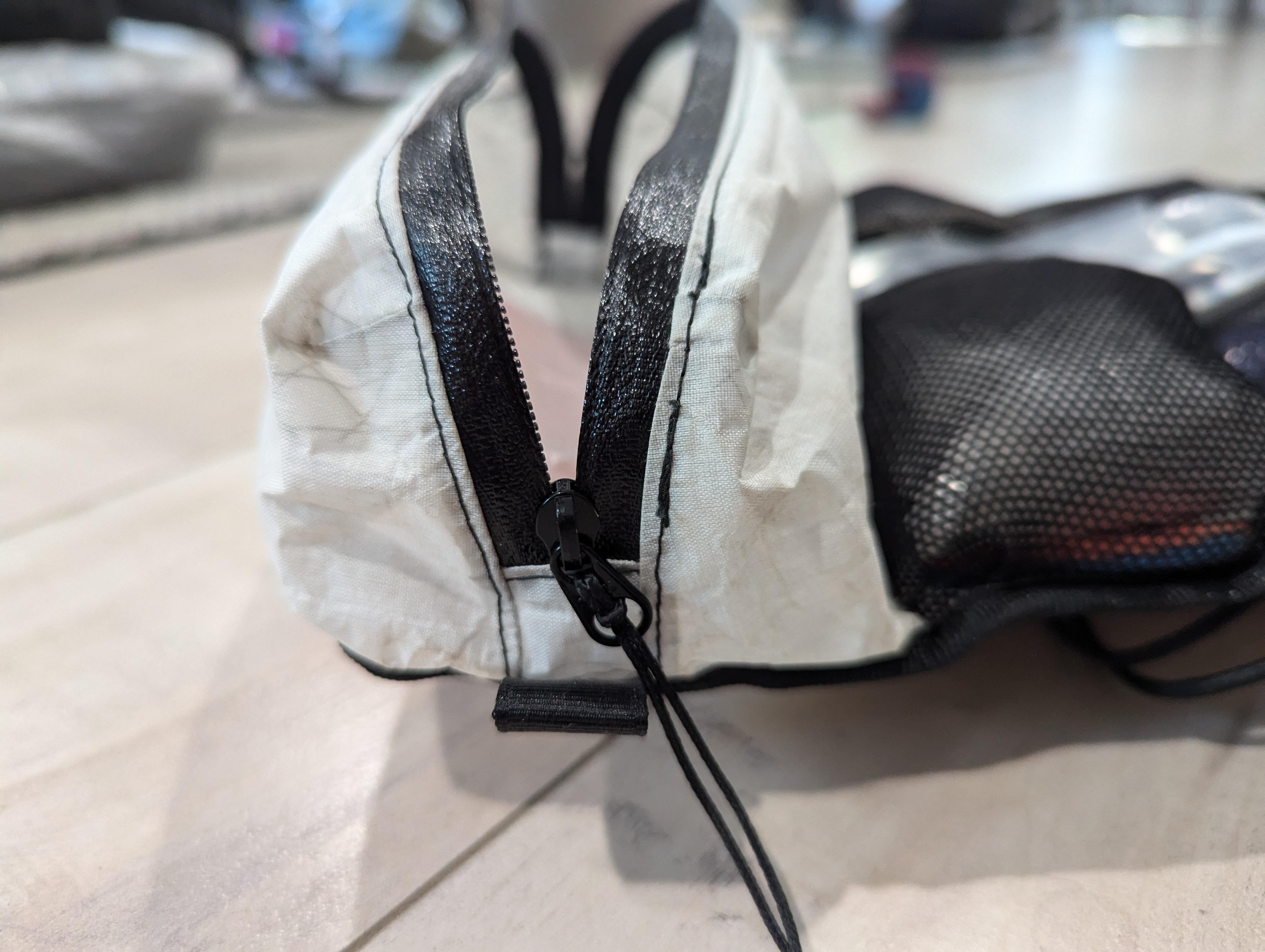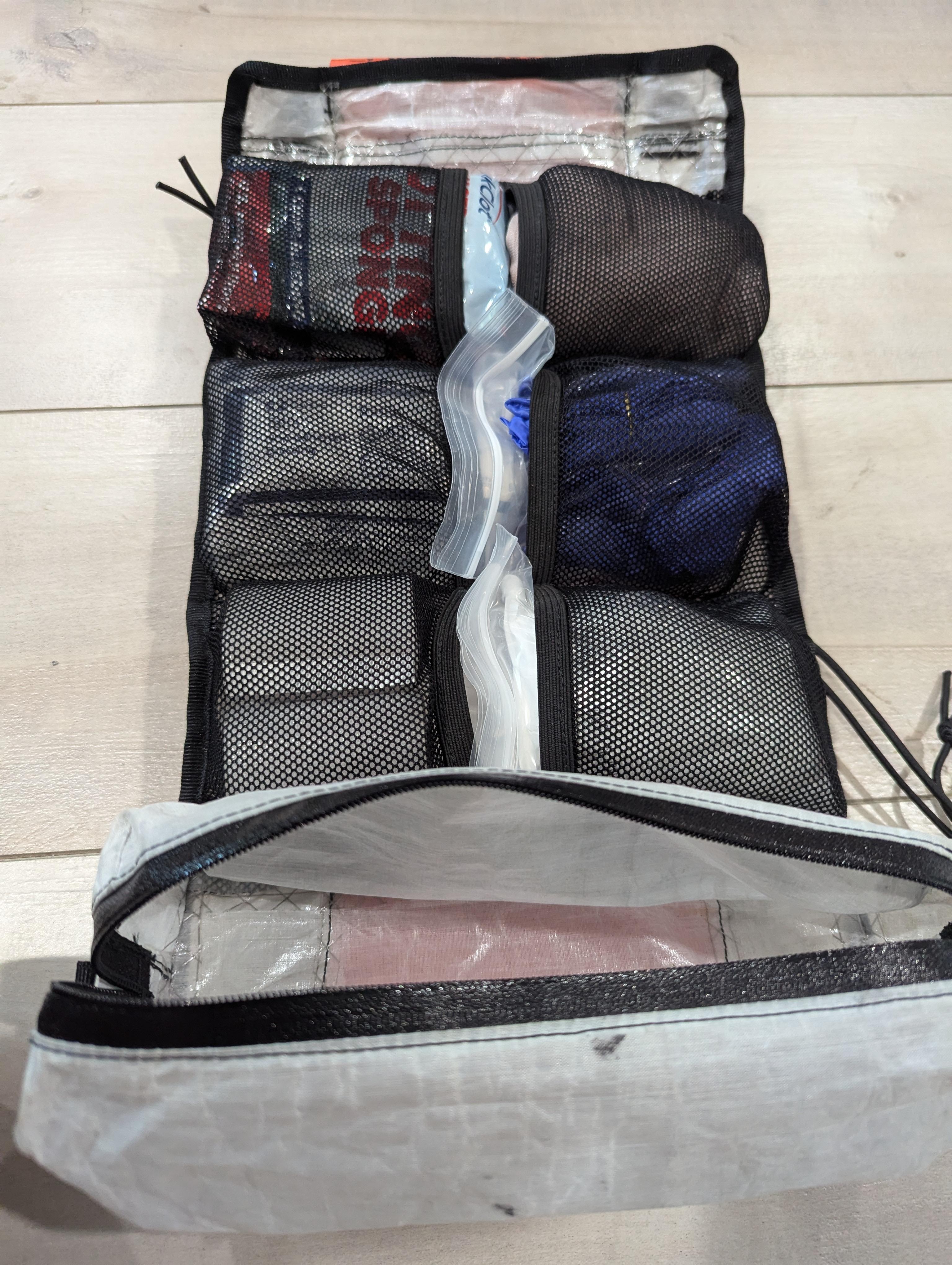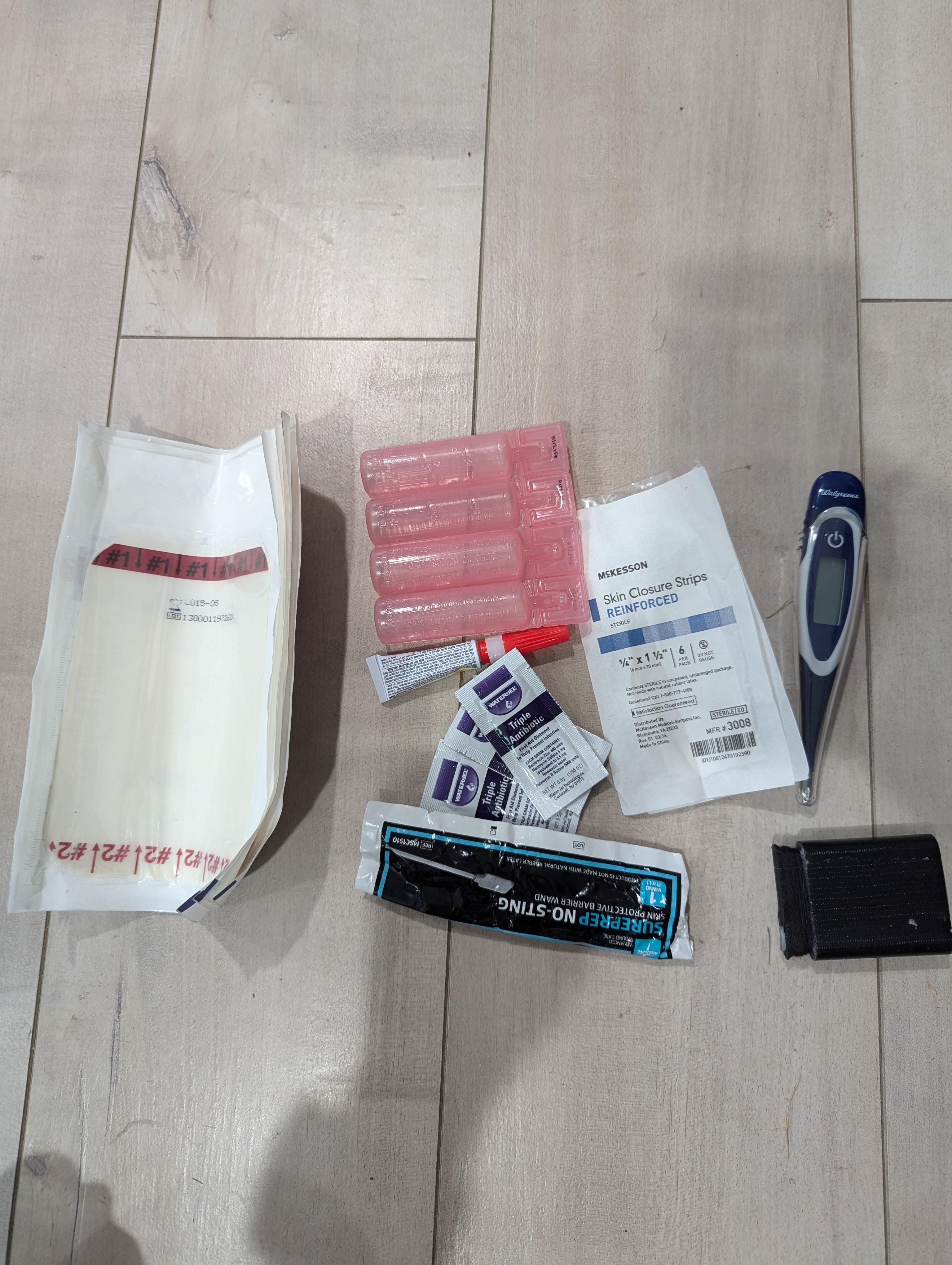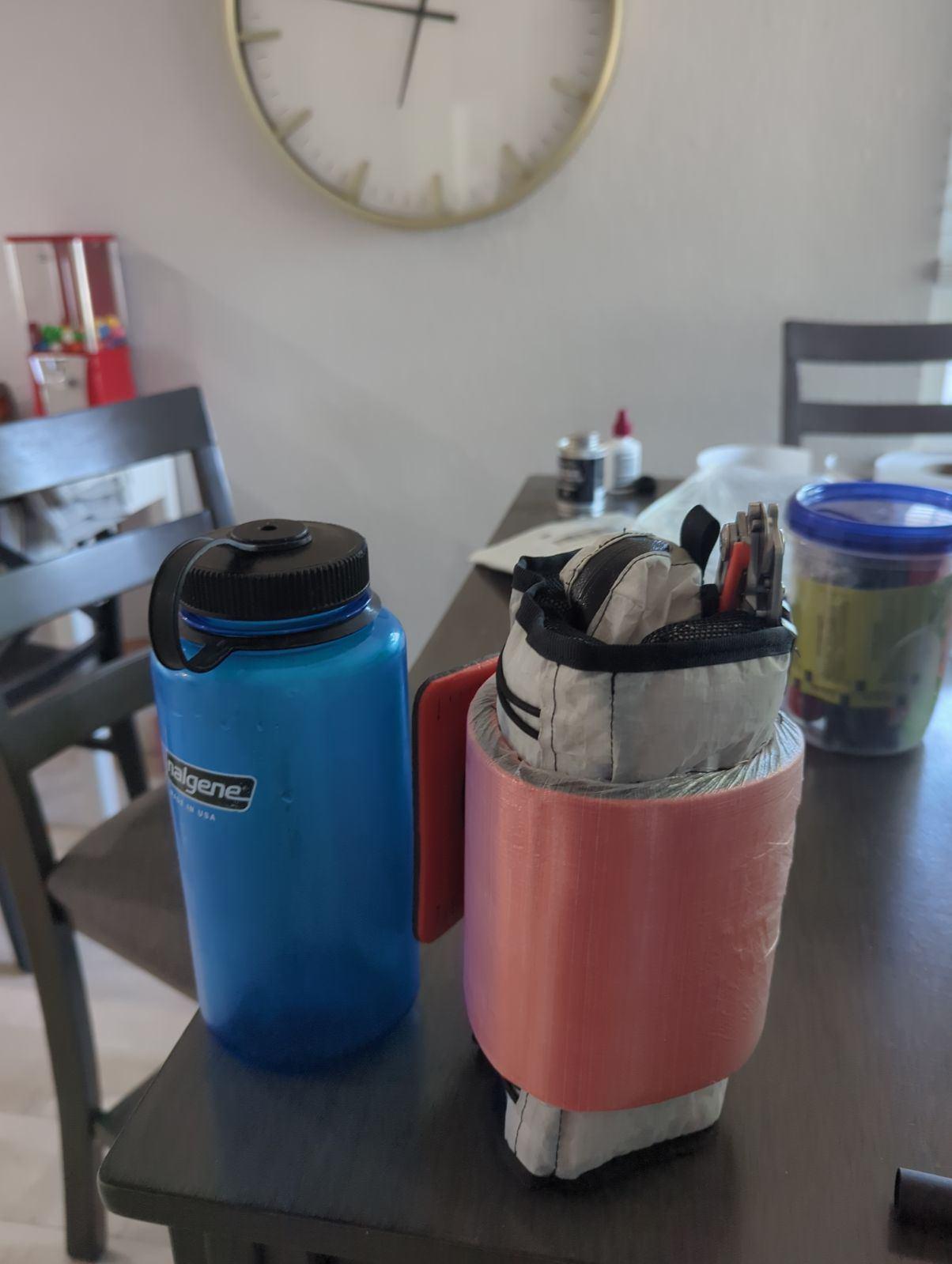Topic
DIY First aid kit (bag)
Forum Posting
A Membership is required to post in the forums. Login or become a member to post in the member forums!
Home › Forums › Gear Forums › Make Your Own Gear › DIY First aid kit (bag)
- This topic has 23 replies, 9 voices, and was last updated 5 months ago by
 Brian T.
Brian T.
-
AuthorPosts
-
Sep 22, 2024 at 3:09 pm #3818567
I have a lot of first aid training, and have done search and rescue in 3 states. I have used lots of first aid items small and large, but my biggest complaint is consistently the bags that get used for first aid kits. They rarely seem built to purpose, are typically made in some “military” style with 500D ballistic nylon and rarely offer the features I want in a FAK.
As a result I went about designing my own FAK bag. One that would be purpose built. offer great organization and visibility, and would be extremely light to boot.
I’ve shared these bags with some friends in the emergency medecine and SAR communities I am a part of but I thought some of the folks in this group might also appreciate these. (I made a small and a large, although the small is my “daily driver” and the large is something I only use on a SAR call, or keep in the car)

Here you can see the large and small kit side by side (along with my toes)

The large kit

The small kit

Here is the small kit empty (58g)

Large kit on the scale (100g)

Here you can see both kits rolled up and filled. You can also see the sam splint specific pocket on the back side of the roll (this gives some stiffness to the kit, and allows this bulky item to take up the minimum space, but is easily deployed and replaced).
Curious for thoughts, reactions, ideas.
Sep 23, 2024 at 2:32 pm #3818645Brian – nice looking kits – definitely well thought out and organized. I spend a lot of time with Boy Scouts or my kids on trips and am always trying to figure out the best way to pack 1st aid supplies and have been contemplating MYOG designs. For a personal kit I’d probably still just use a ziplock bag, but for the group something like this would be nice. A few questions – What materials did you use? I can’t quite tell what the bag-like portion of the kit is at the bottom of each unrolled kit – is this another pocket? And what’s your total weight with all of your supplies for each? Thanks!
Sep 23, 2024 at 5:21 pm #3818663the bag is constructed from 2.93 dyneema including the center/bottom pouch.
The filled weights will vary based on what exactly you want to pack, but my smaller kit is 924g with a pair of raptors (165g).The bigger one is heavier, but again, depends what you pack. This kit has lots of stuff in it, some of which is pretty heavy. It’s pretty comprehensive in contents I would say its similar to maybe these products in what I have packed:
Myfak (which for reference is 1100-1600g)FWIW it’s part of my trip prep to go through the kit and make sure it has what it needs (not expired or used up, has things appropriate to the situation) so the total weight changes basically every time.
Sep 23, 2024 at 5:34 pm #3818664as far as the bottom/center pocket it is like a small, full width pocket with a waterproof zipper. Here are some more pics:



It’s useful for misc items, but most useful for things that don’t fit well in the smaller side pockets. For example here is what I had in there on my last adventure:

4x large transparent dressings
2x skin closure strips
1x skin prep stick (helps with closure strips)
4x sterile saline (for irrigation of wounds or eyes)
4x topical ABX
1x thermometer
1x commongear repair kit (patches, sewing needles, thread, gorilla tape)
This bottom pouch also frequently carries other things like an epi pen, some larger medications if needed, a high pressure irrigation syringe, glucose tablets or gel, or other things the situation might call for like suture tools or a skin stapler, or a chest seal and packing gauze. all depending on what I think I want to be sure to be prepared for.
FWIW most of the time it’s blisters, electrolytes, scrapes, etc. But I have several times been glad I brought the heavier stuff, but it’s usually (knock on wood) overkill.
Sep 23, 2024 at 6:09 pm #3818671Awesome job on the packs!! Retired FF/EMT, and we always kept our gear neat organized for quick use but also easy to tell about restocking at a glance. I’ve never found something I liked for my backpack, and you’ve inspired with your design. Did you draw any plans up or just wing it? Starting to think about my next MYOG projects (1 for pack, 2 for cars….)
Sep 24, 2024 at 9:43 am #3818697I also would love some more details on the construction. A sheet of DCF and some elastic mesh attached & sewn into pockets shapes, all sewn against a DCF pouch? Did you make the roll and pouch separately or all one piece? Love the splint pocket; using those to keep its shape was a great idea.
Sep 24, 2024 at 7:02 pm #3818755@CFDTuc – I did start with a drawing. I made one in CAD to lay out size and shape. I then printed it 1-2 scale and sort of stacked up my gear on the squares to see approximately what I could fit. I went back and forth on the size of the gap between the mesh pockets, how many pockets to have etc.
My rough guidance was I wanted the bigger one to carry all the gear I would want on a SAR, even a gnarly one. I wanted my small one to get close to the size of a nalgene, and I would fit the best stuff for the trip.
Here is the packed size reference on the small one:

The rough theory was that way I might be able to stuff it into an outside water bottle pocket for quick deploys, and it would be easy enough to fit in my pack at that size.
@zeroflight
Yes that’s basically how it’s made, the main panel is 2.93 DCF the two runs of mesh pockets are one piece of non stretchy mesh (puckered into some pocket spaces with elastic at the opening side. The pouch at the bottom was made without a “bottom” then the outside was all stitched together with the black reinforcing webbing on the outside. The splint pouch was the last to go on, it’s actually not sewn continuously around the entire border, so it could be sewn inside the pockets (if that makes sense).The seams on the back panel are all reinforced with TNT tapeTBH I could not have done this complicated of sewing on my own, I am a good designer/engineer but a pretty medium sewer. I had some help from a friend to bring these to life.
Sep 25, 2024 at 8:06 am #38187711-1 scale sorry that typo made it make no sense.
Sep 26, 2024 at 2:42 pm #38189311x skin prep stick (helps with closure strips)
What is the skin prep stick that you mention?
Sep 26, 2024 at 4:21 pm #3818939@bill it’s this product:
https://athome.medline.com/en/medline-sureprep-no-sting-skin-barrier-1ml-wand-125ct-msc1510It is called sureprep, it is an alternative to the more traditional Benzoin tincture https://store.nols.edu/products/benzoin-tincture-5pk
It has a few advantages, chiefly that it doesn’t hurt if you get some in the wound, but the purpose is the same, it protects the skin right next to the wound and promotes the closure strip adhesion. It’s really a night and day difference IMO to use skin prep if you are approximating with something like steri strips. I don’t close things in the field often, but when I do, I want them to stay closed :) (to that end I will typically cover the strips with a transparent dressing to further keep it closed to the outside environment).
Sep 30, 2024 at 12:17 pm #3819100Nice job! Back when I was leading trips in the 1980s, I used an Adventure 16 organizer with similar see-through mesh pockets so I could quickly get to each item. “A place for everything and everything in its place” also helps with restocking after a trip. But now on solo / couples / family trips, everything gets tossed into a Ziplock, as long as I have it long, I can eventually find it.
And, whether a first responder or a paid trip leader, there’s a professionalism conveyed through a purpose-built kit like that – it engenders more confidence from the victim than having dumped more stuff into a bigger Ziplock.
I think the lowest-hanging few grams in most self-made FAKs is a bit more documentation. You knew what each pill in the mini baggie was when you loaded up the kit, but will you, in 3 years, at altitude when stressed and perhaps out of range from Googling, “blue tablet L368” remember which off-brand Aleve tablet you packed? So write on each baggie, drug name, uses, dosage, timing. Ideally, print a little chart by dragging images of the pills alongside basic prescribing info. Laser-print / xerography heat-sets the toner onto the paper. That and some Rite-in-the-Rain waterproofing goo (or just Thompson’s Waterseal for your wood deck) makes for a water-proof reference chart.
And a small printout of either the entire AK contents or a sub-list for each pocket serves as both reference in the field and for later restocking.
I’ve seen some helpful lists for pilots of what bits of the plane can be used for after crash. Similar reminders of the many things that can be used as splints, water purification, sleep aids, diuretics, anti-diarrheal, and anti-constipating (not just the drugs, but which foods help or hurt) can be really handy. I never remember all of those and potentially we’re caring for someone for a few days and could bump their diet accordingly.
Sep 30, 2024 at 12:49 pm #3819114Using a phone for documentation is very helpful. Its all in one place, is weightless and provides more capacity than ever needed.
Downloading youtube videos is especially useful for first aid techniques, reminders for more unusual but useful knots, etc. Watching a video helps calm nerves compared to reading when under duress.
The risk of two points of failure is uncommon (phone and injury) but possible such as solo with a very bad fall
Sep 30, 2024 at 3:44 pm #3819123I’ll admit I’m old school and while I’ve started to Google videos of “Recipes for Smoked Salmon Souffle” or “Replace headlight bulb 2005 Prius”, it wouldn’t occur to me to Google, “How to apply a tourniquet” or “How to light a fire” in the moment so I’m ignoring a potential resource as a Luddite.
I’ve only gotten as far as snapping a pic of the map at the trailhead as I start off the hike.
Sep 30, 2024 at 4:28 pm #3819125Sounds tasty, a good start! You’re so tech savvy I thought you’d have a sim card loaded.
The key is to search & download the youtube video to your phone at home, for offline viewing. It would be stressful to try and google for this stuff in the moment of need. Once downloaded its there forever so building a big “what if” library is pretty painless.
Sometimes my brain is a fried egg after a really long hard day and these videos help me focus more on the present.
Oct 8, 2024 at 7:55 am #3819441@David I think youtube is one of the best DIY training sources out there, however I disagree with the “just in time” model for first aid (life saving) specifically.
In SAR we like to say “people think they rise to the occasion, but in reality they default to their highest level of training.” I can’t advocate enough for formal first aid training, practicing with your gear and knowing how to handle emergencies. Thankfully emergencies even in the back country are very rare, but the difference between training and not can, and often is, life or death. The TCCC says on average life threatening bleeds (like you would use a TQ for) will cause the patient to start to lose consciousness in 34 seconds on average.
I’m not saying no one can go outside without being a paramedic, but a few things need to be second nature. Stop the bleed courses are offered everywhere and are often free. CPR is easy to learn but hard to do without practice.
All that said, this is a great strategy for non life threats. Like downloading videos on novel ways to deal with blisters in the back country or even how to use steri strips to close a wound or irrigate a laceration. What medications you can give someone for pain, or how to tape an ankle that is sprained. These situations you have HOURS/DAYS/even WEEKS to act. This makes a library super useful. You can also provide that library to others who may not have training.
For those oldschool among us I am partial to this field guide:
https://store.nols.edu/collections/educational-discount/products/wilderness-medicine-field-guide-6th-edition?variant=29211130167319Oct 8, 2024 at 8:03 am #3819442@David T
I have played with label ideas on the FAK, trouble is on the smaller one, I repack it for every trip, making sure what I bring makes sense for the situation. I can make new labels every time, but that’s why I tried to make the pockets as visible as possible, kinda “no description needed”. You’re right that medications should always be labeled, I carry meds in a different pouch, but sometimes I will put them in the zippered center part of these kits.Oct 8, 2024 at 8:32 pm #3819513This looks great. My question is how do you keep it dry? Does the rolled up kit go into a small dry bag? What do you find works best?
Scott
Oct 9, 2024 at 11:34 am #3819546@scott Yes, that’s the only reliable way to make sure the kit stays 100% dry.
Truth be told, I put most moisture sensitive items in ziplocs (I have some sized the same as these pockets) and for the most part this kit is inside my bag, which is usually more than dry enough.Oct 9, 2024 at 12:58 pm #3819553BrianT: I’m with you on the value and need for training, especially for airways, circulation and serious blood loss. I taught 2,300 students CPR, FA and Wilderness Advanced FA and felt the highest value in the 50-hour versus an 8-hour course was the ability to include multiple practical sessions, with actors in make-up, latex wounds / protruding bones, some screaming and the more seriously “injured” being silent. Not only do we default to our highest level of training, but since these are in part physical skills, we need to train as such. No amount of YouTube videos teach you how to ride a bicycle, perform mouth-to-mouth, or CPR.
For the practical “final exam” in Wilderness AFA, we’d have the students bring their packs as they’d have them on a trip so splints and keeping victims warm or cool would be achieved with pack stays, sleeping pads and the like.
Oct 10, 2024 at 8:46 am #3819569@David T sorry if I sounded preachy, I didn’t mean to. Just advocating for the community to take serious training seriously. :) sounds like we are in agreement here. IMO, most search and rescue events I have been involved in would have been significantly improved or prevented with relatively modest training and preparation, sometimes its hard not to think about that fact all the time.
Thanks for spending so much of your life teaching critical skills.
Oct 10, 2024 at 9:39 am #3819573What do they say now about mouth to mouth rescesetation? Don’t do but just do chest compression?
Oct 10, 2024 at 2:34 pm #3819595Jerry: in the short version of the course, they now cover chest compressions only.
Blood circulation is harder to achieve externally and chest compressions move some air in and out of the lungs. You’re trying to get semi-oxygenated blood to their brain, not breath for them during a marathon.
Also, there’s less hesitation to performing chest compressions on a stranger than mouth to mouth (blood, vomit, cooties).
Two person CPR is still better, but it’s rare that there are two able, willing rescuers who aren’t also better equipped with an airway and supplemental oxygen.
Oct 10, 2024 at 2:44 pm #3819596ahhh… I guess I’d just do chest compressions. I haven’t done first aid class for decades.
Oct 11, 2024 at 7:55 am #3819641@jerry David’s 100% right. Compression only CPR has about the same outcomes as with breaths when first responders are alone. With a partner outcomes are slightly better when one does breaths and the other does compressions.
Also outcomes are better when rescuers switch often. Compression rate and quality matters a lot and most studies show the quality degrades after a few minutes.
-
AuthorPosts
- You must be logged in to reply to this topic.
Forum Posting
A Membership is required to post in the forums. Login or become a member to post in the member forums!
Trail Days Online! 2025 is this week:
Thursday, February 27 through Saturday, March 1 - Registration is Free.
Our Community Posts are Moderated
Backpacking Light community posts are moderated and here to foster helpful and positive discussions about lightweight backpacking. Please be mindful of our values and boundaries and review our Community Guidelines prior to posting.
Get the Newsletter
Gear Research & Discovery Tools
- Browse our curated Gear Shop
- See the latest Gear Deals and Sales
- Our Recommendations
- Search for Gear on Sale with the Gear Finder
- Used Gear Swap
- Member Gear Reviews and BPL Gear Review Articles
- Browse by Gear Type or Brand.


